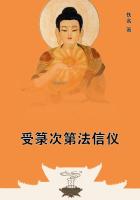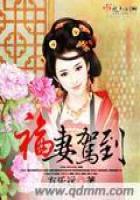But, as it takes its forms bodily from nature (the trees, shrubs, grasses, and flowers taken, originally at least, from wood and field) it is to that extent not an art such as, let us say, plastic art.Further, the arrangement which it makes is not conditioned by any concept of the object or of its end (as is the case in sculpture), but by the mere free play of the imagination in the act of contemplation.Hence it bears a degree of resemblance to simple aesthetic painting that has no definite theme (but by means of light and shade makes a pleasing composition of atmosphere, land, and water.)(3) The art of the beautiful play of sensations (sensations that arise from external stimulation), which is a play of sensations that has nevertheless to permit of universal communication, can only be concerned with the proportion of the different degrees of tension in the sense to which the sensation belongs, i.e., with its tone.In this comprehensive sense of the word, it may be divided into the artificial play of sensations of hearing and of sight, consequently into music and the art of colour.It is of note that these two senses, over and above such susceptibility for impressions as is required to obtain concepts of external objects by means of these impressions, also admit of a peculiar associated sensation of which we cannot well determine whether it is based on sense or reflection; and that this sensibility may at times be wanting, although the sense, in other respects, and in what concerns its employment for the cognition of objects, is by no means deficient but particularly keen.In other words, we cannot confidently assert whether a colour or a tone (sound)is merely an agreeable sensation, or whether they are in themselves a beautiful play of sensations, and in being estimated aesthetically, convey, as such, a delight in their form.If we consider the velocity of the vibrations of light, or, in the second case, of the air, which in all probability far outstrips any capacity on our part for forming an immediate estimate in perception of the time interval between them, we should be led to believe that it is only the effect of those vibrating movements upon the elastic parts of our body, that can be evident to sense, but that the time-interval between them is not noticed nor involved in our estimate, and that, consequently, all that enters into combination with colours and tones is agreeableness, and not beauty, of their composition.But, let us consider, on the other hand, first, the mathematical character both of the proportion of those vibrations in music, and of our judgement upon it, and, as is reasonable, form an estimate of colour contrasts on the analogy of the latter.Secondly, let us consult the instances, albeit rare, of men who, with the best of sight, have failed to distinguish colours, and, with the sharpest hearing, to distinguish tones, while for men who have this ability the perception of an altered quality (not merely of the degree of the sensation) in the case of the different intensities in the scale of colours or tones is definite, as is also the number of those which may be intelligibly distinguished.Bearing all this in mind, we may feel compelled to look upon the sensations afforded by both, not as mere sense-impressions, but as the effect of an estimate of form in the play of a number of sensations.The difference which the one opinion or the other occasions in the estimate of the basis of music would, however, only give rise to this much change in its definition, that either it is to be interpreted, as we have done, as the beautiful play of sensations (through bearing), or else as one of agreeable sensations.According to the former interpretation, alone, would music be represented out and out as a fine art, whereas according to the latter it would be represented as (in part at least) an agreeable art.
SS 52.The combination of the fine arts in one and the same product.
Rhetoric may in a drama be combined with a pictorial presentation as well of its subjects as of objects; as may poetry with music in a song; and this again with a pictorial (theatrical) presentation in an opera; and so may the play of sensations in a piece of music with the play of figures in a dance, and so on.Even the presentation of the sublime, so far as it belongs to fine art, may be brought into union with beauty in a tragedy in verse, a didactic poem or an oratorio, and in this combination fine art is even more artistic.
Whether it is also more beautiful (having regard to the multiplicity of different kinds of delight which cross one another) may in some of these instances be doubted.Still in all fine art the essential element consists in the form which is final for observation and for estimating.Here the pleasure is at the same time culture, and disposes the soul to ideas, making it thus susceptible of such pleasure and entertainment in greater abundance.The matter of sensation (charm or emotion) is not essential.Here the aim is merely enjoyment, which leaves nothing behind it in the idea, and renders the soul dull, the object in the course of time distasteful, and the mind dissatisfied with itself and ill-humoured, owing to a consciousness that in the judgement of reason its disposition is perverse.
Where fine arts are not, either proximately or remotely, brought into combination with moral ideas, which alone are attended with a selfsufficing delight, the above is the fate that ultimately awaits them.They then only serve for a diversion, of which one continually feels an increasing need in proportion as one has availed oneself of it as a means of dispelling the discontent of one's mind, with the result that one makes oneself ever more-and more unprofitable and dissatisfied with oneself.With a view to the purpose first named, the beauties of nature are in general the most beneficial, if one is early habituated to observe, estimate, and admire them.
SS 53.Comparative estimate of the aesthetic worth of the fine arts.















